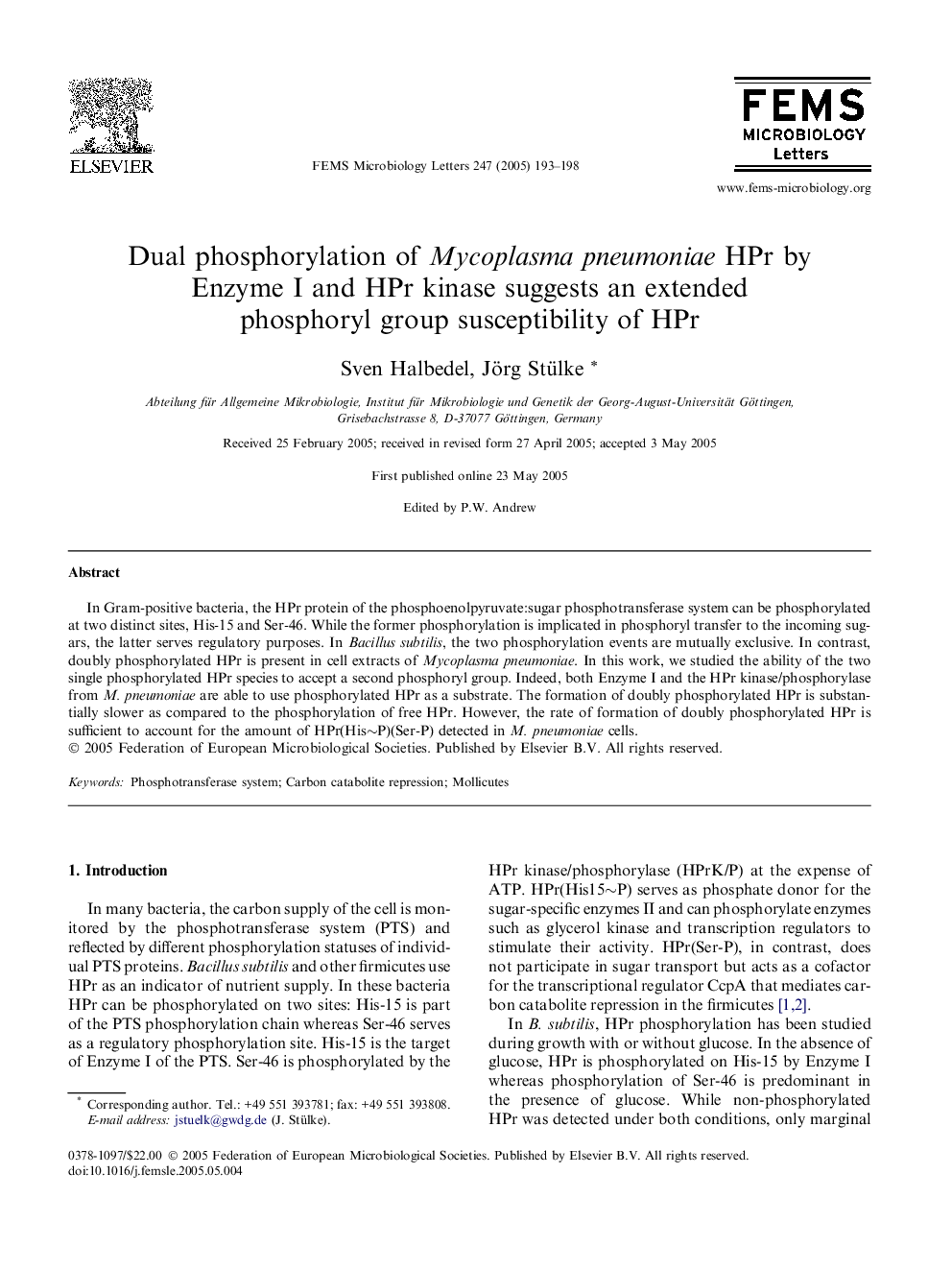| Article ID | Journal | Published Year | Pages | File Type |
|---|---|---|---|---|
| 9121631 | FEMS Microbiology Letters | 2005 | 6 Pages |
Abstract
In Gram-positive bacteria, the HPr protein of the phosphoenolpyruvate:sugar phosphotransferase system can be phosphorylated at two distinct sites, His-15 and Ser-46. While the former phosphorylation is implicated in phosphoryl transfer to the incoming sugars, the latter serves regulatory purposes. In Bacillus subtilis, the two phosphorylation events are mutually exclusive. In contrast, doubly phosphorylated HPr is present in cell extracts of Mycoplasma pneumoniae. In this work, we studied the ability of the two single phosphorylated HPr species to accept a second phosphoryl group. Indeed, both Enzyme I and the HPr kinase/phosphorylase from M. pneumoniae are able to use phosphorylated HPr as a substrate. The formation of doubly phosphorylated HPr is substantially slower as compared to the phosphorylation of free HPr. However, the rate of formation of doubly phosphorylated HPr is sufficient to account for the amount of HPr(Hisâ¼P)(Ser-P) detected in M. pneumoniae cells.
Related Topics
Life Sciences
Biochemistry, Genetics and Molecular Biology
Genetics
Authors
Sven Halbedel, Jörg Stülke,
